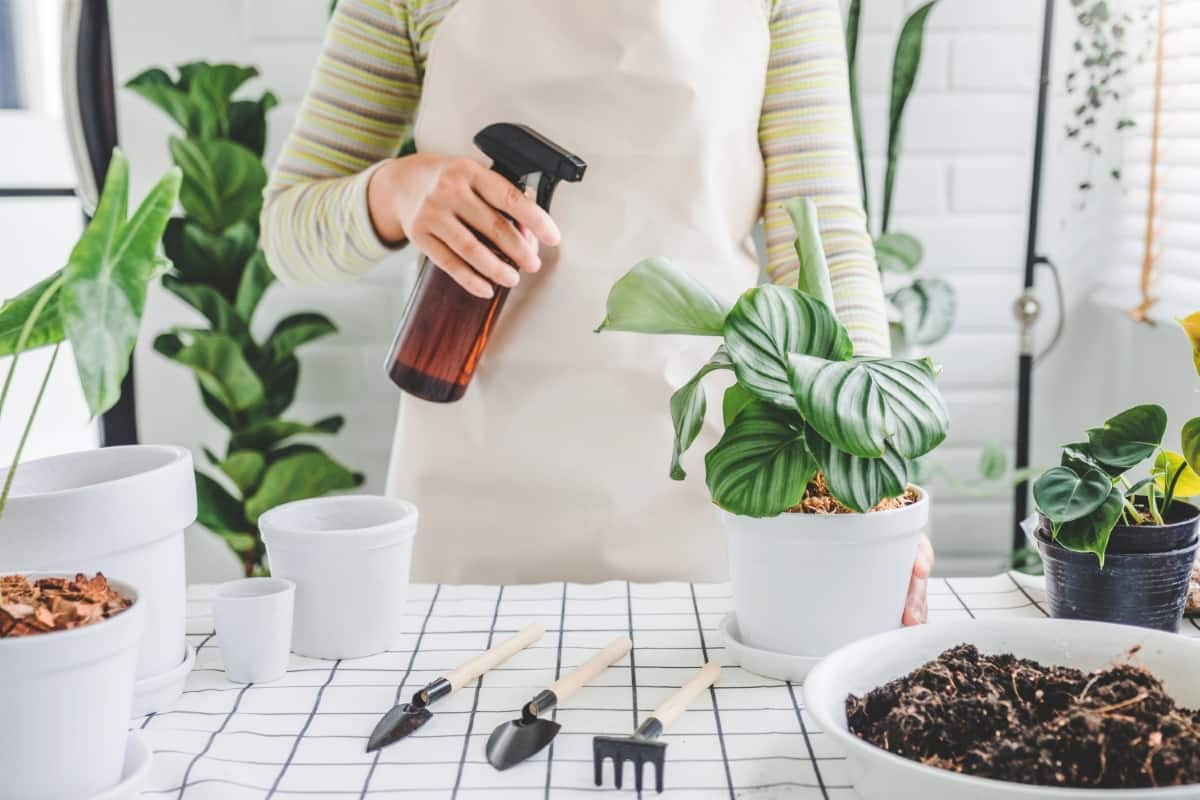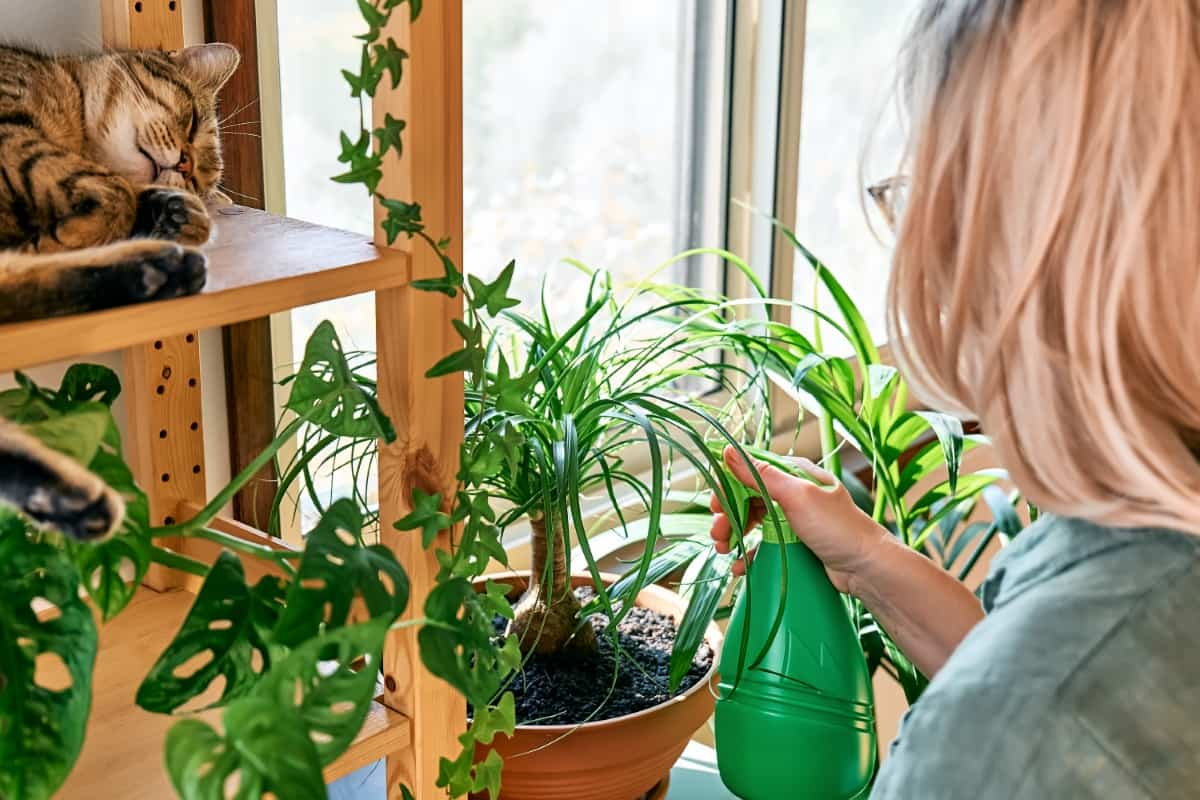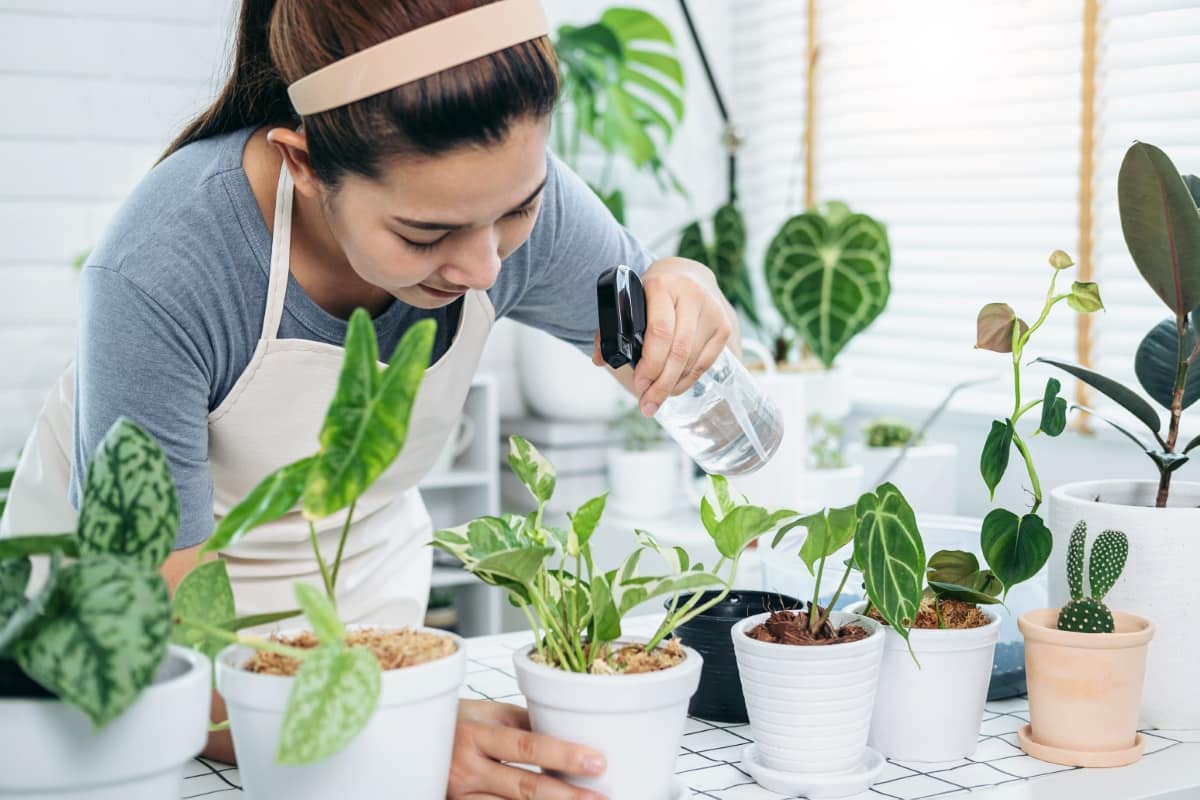Organic pest control focuses on utilizing natural methods and products to prevent, manage, and eliminate pests in indoor gardens. It involves understanding the principles and practices that promote a balanced ecosystem within your home. It promotes long-term sustainability by fostering a healthy garden ecosystem. Furthermore, choosing organic methods protects the overall health of your plants themselves.

Organic Pest Control for Indoor Plants
Identifying Common Indoor Plant Pests and Organic Indicators
One common indoor plant pest is aphids. These insects suck sap from plants and leave behind sticky honeydew residue. Look out for curled leaves or ants crawling around your plants, as they are often attracted to aphids. Another pesky intruder is the spider mite. These minuscule arachnids feed on plant tissue and cause yellowing or stippling of leaves. They also produce fine webs that resemble spider silk.
Fungus gnats may seem harmless at first glance, but their larvae can affect your plants’ roots by feeding on them. Mealybugs are another troublesome pest known for their cotton-like white fluffy appearance. Homemade indoor plant bug sprays are a great way to keep those unwanted pests at bay without the use of harmful chemicals.
Scale insects are notorious for their protective shell-like coverings that make them difficult to spot initially. They attach themselves to stems and leaves, draining nutrients from the plant’s tissues. To control indoor pests organically, it’s crucial to understand the indicators of infestation so you can take appropriate action promptly.
Organic Preventative Measures: Cultivating a Healthy Indoor Garden Ecosystem
Creating a healthy ecosystem in preventing pest infestations in indoor gardens. By implementing organic preventative measures, you can maintain the balance and well-being of your plants while deterring unwanted pests. The essential step is to inspect plants for of pests or diseases regularly. Catching these issues early on allows you to take immediate action and prevent further spread. Remove any affected leaves or stems promptly to minimize the risk.
Another effective measure is practicing good hygiene in your indoor garden. Keep your gardening tools clean and sanitize them after each use to avoid spreading potential pests or diseases from one plant to another. Proper watering methods also play a crucial role in preventing pest problems.
Introducing beneficial insects into your indoor garden can be an eco-friendly way to control pests naturally. Furthermore, creating barriers around vulnerable plants can help deter crawling insects from reaching them. Use materials like diatomaceous earth or copper tape around pots to act as physical barriers against slugs, snails, and other small invaders.
Natural Predators: Utilizing Beneficial Insects for Organic Pest Management
Ladybugs are one such beneficial insect that can be incredibly helpful in controlling aphids, mealybugs, and spider mites. These tiny red beetles feed on these pests, effectively reducing their populations without the need for harsh chemicals. Another beneficial insect to consider is the green lacewing. By releasing them into your indoor garden, you can prevent infestations before they even begin.
In case you missed it: How to Use Neem Oil in Indoor Plants: Best Way to Get Rid of Bugs Naturally from Indoor Gardens

To attract these helpful insects to your indoor garden, provide them with a habitat they’ll love. Planting flowers such as marigolds or daisies will not only add beauty but will also encourage beneficial insect activity. Choosing organic pest control methods for your indoor garden not only protects your precious plants but also contributes towards a healthier environment.
DIY Organic Pest Sprays: Recipes and Application Methods
One popular DIY organic pest spray for indoor plants involves combining water with a few drops of liquid dish soap. The dish soap helps the solution adhere to the pests and disrupt their delicate outer membranes. Mix liquid dish soap (one teaspoon) with one quart of water in a bottle, shake well, and apply directly onto the affected areas of your plants. Another option is to create a garlic-based pest spray by blending garlic cloves with water until smooth.
Strain the mixture through cheesecloth or a fine mesh sieve to remove any solids, then dilute it with more water before transferring it into a spray bottle. Garlic contains sulfur compounds that repel many common pests while being safe for your plants. If you prefer something even simpler, try mixing vinegar and water equally in a spray bottle. Vinegar has both insecticidal and fungicidal properties that can help combat pests while also preventing fungal infections on indoor plants. It’s also important to reapply the sprays every few days or after watering since they may wash off over time.
Essential Oils for Pest Control: Safe Usage on Indoor Plants
Essential oils can be a major option for keeping pests at bay without the use of chemicals. Follow the instructions and do a small test before applying any essential oil to your plants. There are several essential oils known for their insect-repellent properties. Peppermint oil, with its strong scent, can deter ants, spiders, and other common indoor plant pests.
Citronella oil is another popular choice that repels mosquitoes and flies. To use essential oils on your indoor plants, you can create a diluted spray in a bottle by mixing a few drops of the chosen oil with water. Shake well before each use and apply lightly onto the foliage of your plants, avoiding any sensitive areas such as flowers or new growth.
Physical Barriers and Traps: Non-Chemical Pest Control Options
The popular method is the use of sticky traps. These adhesive strips are placed near plants to trap flying insects such as gnats, fruit flies, and whiteflies. Another physical barrier option is using mesh or netting around your plants. This helps prevent crawling insects like aphids, spider mites, and thrips from reaching your plants. Wrap the mesh around pots or cover entire shelves to create a protective shield against invaders.
By employing these physical barriers and traps in indoor gardens, you can effectively control pests without relying on harmful chemicals that may harm both you and your beloved plants. These are eco-friendly pest control methods for indoor plants that can help protect your plants without harming the environment.
Soil Health and Pest Resistance: Organic Soil Amendments for Indoor Plants
To maintain a healthy indoor garden ecosystem and prevent pests from infesting your plants, it’s crucial to focus on soil health. By enriching the soil with organic amendments, you can make an environment that is less attractive to pests and more resistant to their attacks. The key principle of organic pest control is promoting biodiversity in the soil. Another effective way to enhance pest resistance in indoor plants is by incorporating natural fertilizers such as seaweed extract or fish emulsion into the soil.
In case you missed it: Management of Fungal Diseases in Indoor Gardens: How to Control and Prevent with Natural and Organic Treatment

These products provide essential nutrients while boosting plant immunity, making them less susceptible to pest damage. Additionally, certain amendments like neem cake or powdered garlic can act as natural repellents against common indoor plant pests. These substances release compounds that deter insects without causing harm to your indoor plants or the environment.
Organic Fungicide Alternatives: Treating Fungal Infections in Houseplants
The effective option is neem oil, derived from the seeds of the neem tree. It has natural antifungal ways and can be applied directly to affected plants. Another alternative is a mixture of baking soda and water, which creates an alkaline environment that inhibits fungal growth. For those looking for a more potent solution, consider using hydrogen peroxide diluted with water. This gentle yet powerful mixture kills fungus without harming your plants or the environment. Additionally, cinnamon powder sprinkled on the soil acts as a natural fungicide by preventing spore germination.
Frequently Asked Questions (FAQ) on Organic Pest Control for Indoor Plants
Why Should I Use Organic Pest Control for My Indoor Plants?
Organic pest control involves using natural methods and products to manage pests in your indoor garden. By opting for eco-friendly pest management for indoor plants, you can create a healthy environment while minimizing any negative impact on the ecosystem.
How Can I Prevent Pests from Infesting My Indoor Plants?
Prevention is key. Start by keeping your indoor plants clean and inspect plants for any pests or disease signs. Additionally, ensure proper ventilation and avoid overwatering as these conditions attract pests.
What Are Some Common Types of Pests that Affect Indoor Plants?
Common plant pests include aphids, scale insects, spider mites, mealybugs, and fungus gnats, among others. Each type has its specific characteristics and requires targeted treatment methods.
In case you missed it: How to Use Sage Oil for Pest Control: DIY Homemade Recipe of Sage Oil Insecticide for Bug Repellent

Conclusion
Organic pest control offers a safe and sustainable alternative that promotes a healthy ecosystem within your indoor garden. It focuses on using natural and eco-friendly methods to keep those pesky insects at bay. It supports biodiversity and conservation efforts. By utilizing natural predators like beneficial insects or implementing physical barriers, we create a balanced ecosystem within our indoor gardens. Organic pest control for indoor plants is important when it comes to maintaining a healthy and thriving indoor garden.
- Deworming Schedule for Dogs/Puppies: A Beginners Guide
- How to Prevent and Control Parasites in Goats
- Beneficial Insects in Pest Management
- Natural Solutions for Pest Control in Flower Gardens
- Types of Fungicides Used in Agriculture
- Common Issues in the Fruit Development Stage of Pomegranate Farming
- Fruit Development Issues in Papaya: Easy Solutions and Treatment
- Soil-Borne Diseases and How to Protect Your Plants
- Practices to Prevent Disease Spread in the Garden